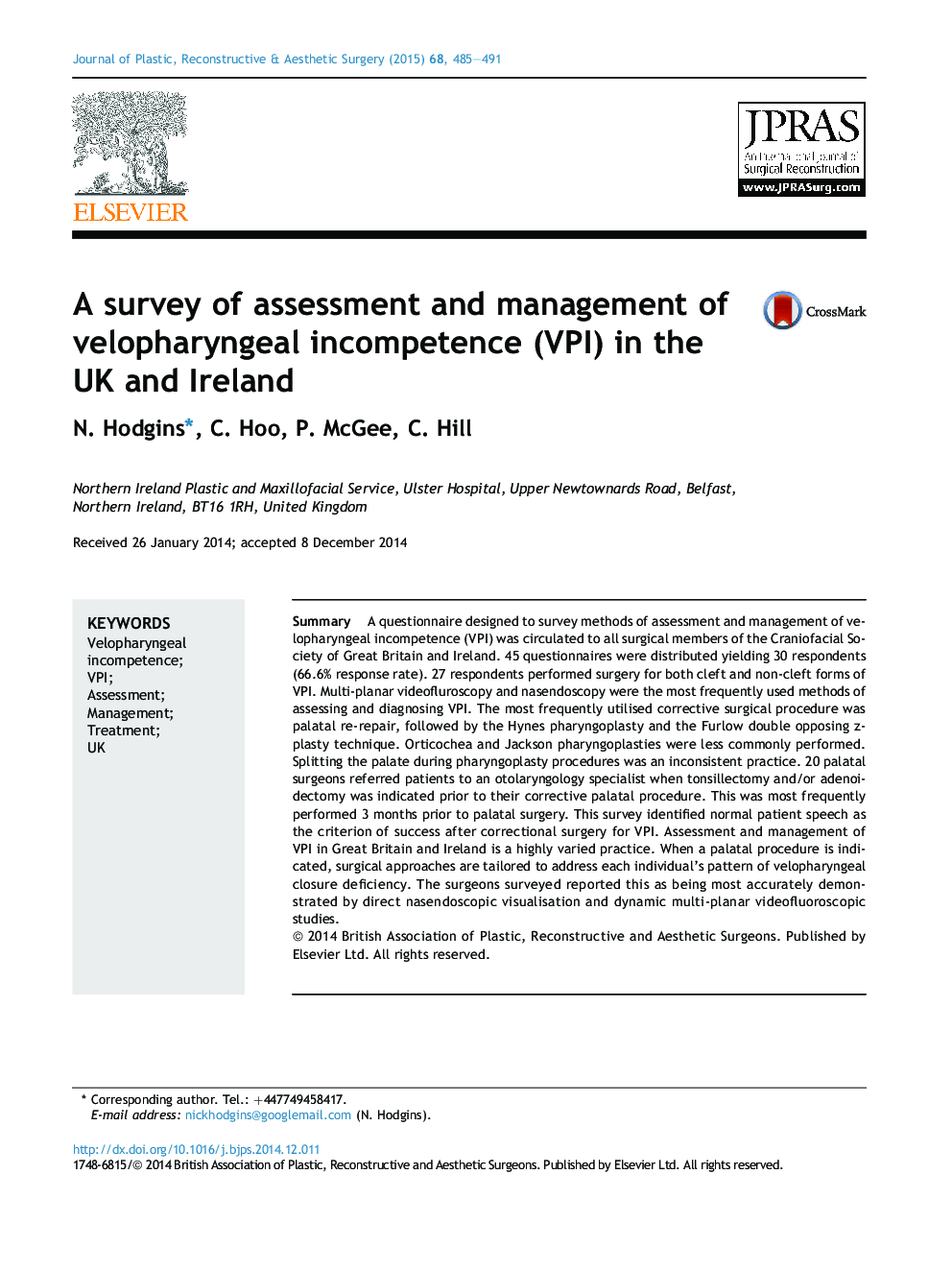| Article ID | Journal | Published Year | Pages | File Type |
|---|---|---|---|---|
| 4118094 | Journal of Plastic, Reconstructive & Aesthetic Surgery | 2015 | 7 Pages |
SummaryA questionnaire designed to survey methods of assessment and management of velopharyngeal incompetence (VPI) was circulated to all surgical members of the Craniofacial Society of Great Britain and Ireland. 45 questionnaires were distributed yielding 30 respondents (66.6% response rate). 27 respondents performed surgery for both cleft and non-cleft forms of VPI. Multi-planar videofluroscopy and nasendoscopy were the most frequently used methods of assessing and diagnosing VPI. The most frequently utilised corrective surgical procedure was palatal re-repair, followed by the Hynes pharyngoplasty and the Furlow double opposing z-plasty technique. Orticochea and Jackson pharyngoplasties were less commonly performed. Splitting the palate during pharyngoplasty procedures was an inconsistent practice. 20 palatal surgeons referred patients to an otolaryngology specialist when tonsillectomy and/or adenoidectomy was indicated prior to their corrective palatal procedure. This was most frequently performed 3 months prior to palatal surgery. This survey identified normal patient speech as the criterion of success after correctional surgery for VPI. Assessment and management of VPI in Great Britain and Ireland is a highly varied practice. When a palatal procedure is indicated, surgical approaches are tailored to address each individual's pattern of velopharyngeal closure deficiency. The surgeons surveyed reported this as being most accurately demonstrated by direct nasendoscopic visualisation and dynamic multi-planar videofluoroscopic studies.
